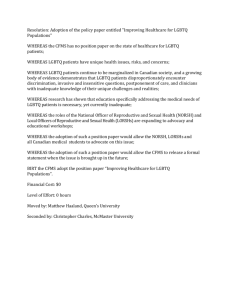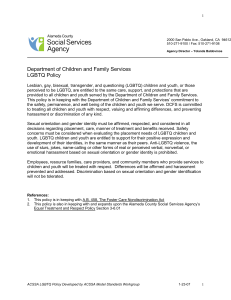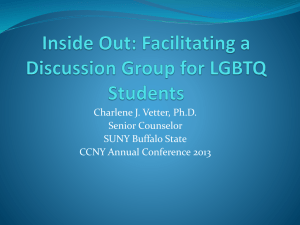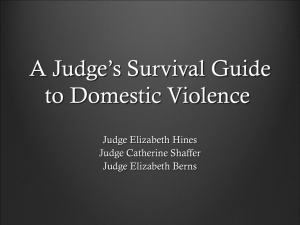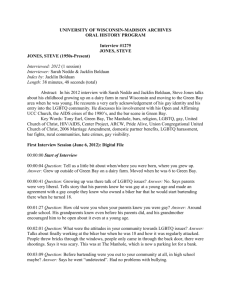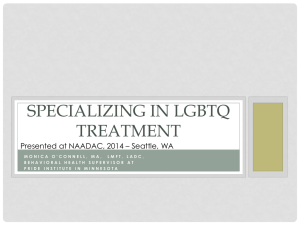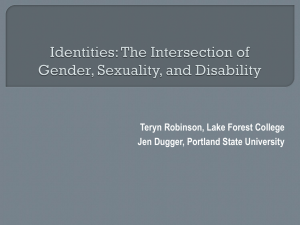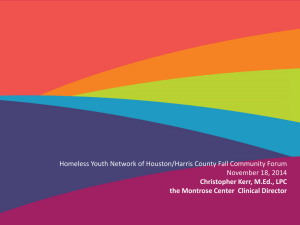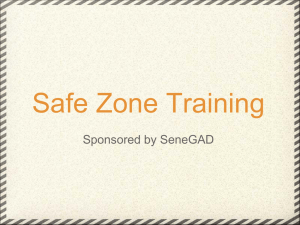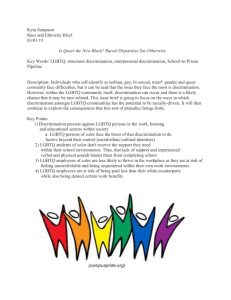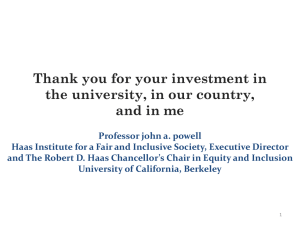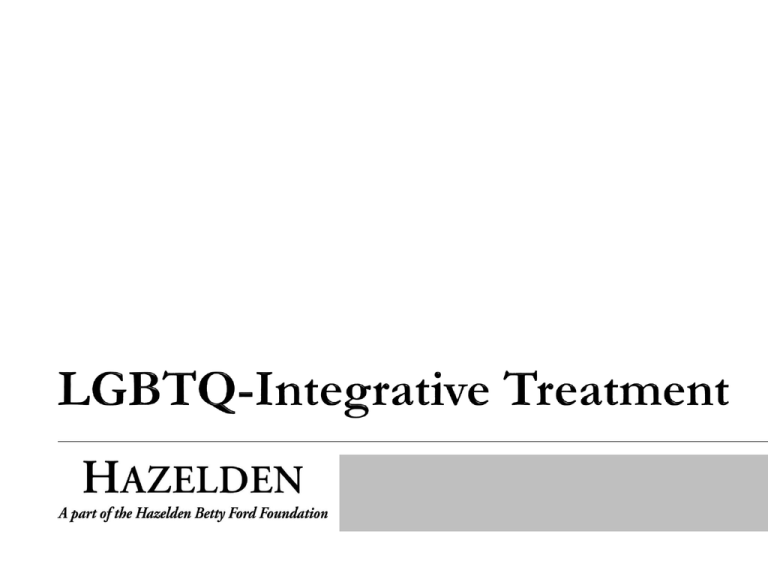
• Director of LGBTQ-Integrative Program
• M.A., Certified Sexuality Counselor, Certified Alcohol and
Drug Counselor, and Licensed Professional Counselor
• Certified by the American Association of Sexuality
Educators, Counselors and Therapists (AASECT)
• Adjunct at Hazelden Graduate School of Addiction Studies
• My role is 50% clinical and 50% outreach
•
•
•
•
•
LGBTQ Language
Research Findings on LGBTQ
Overview of LGBTQ-Integrative Treatment Model
Preliminary Outcomes
LGBTQ Services Outside of HSB
• Health and Human Services uses LGBT as the
agreed upon acronym in the United States.
• They don’t use GLBT, GBLT, LBGT, GLBTQ,
LGBTQ, etc.
• LGBT stands for Lesbian, Gay, Bisexual, and
Transgender.
• Q represents the “continuums”
• Questioning clients represent a significant portion of
those engaging in our program
• How many people identify as LGBT?
• 3.4 percent of the U.S. adult population - more than 8
million people. (2012 Gallup report)
• How many struggle with substance abuse?
• As much as 20-30 percent of the LGBTQ community may
struggle with substance use disorders (Substance Abuse and
Mental Health Services Administration)
- Compared with 10 percent of the population as a whole.
Data that informs our program
• Hazelden’s Butler Center for Research study
• Statistical analysis of two samples of patients
in adult residential treatment at Hazelden.
• Findings published in Research Update
• Article published in the current
edition of Journal of Gay & Lesbian
Social Services
LGBTQ Research Findings
Mean or average:
LGBTQ
non-LGBTQ
p=
Number of detoxifications
1.54
0.65
.002
Number of inpatient CD
episodes
2.08
1.32
.015
LGBTQ Research Findings
LGBTQ Research Findings
• 92% of LGBTQ clients
have a co-occurring
disorder
• Nearly twice as likely to
report physical and
emotional abuse
• Three times as likely to
have a history of sexual
abuse (48%)
• More likely to have
polysubstance diagnoses
Major Issues
Percent of patients
with
LGBTQ
non-LGBTQ
p=
Axis I disorder
92
78
.003
Depressive disorder
70
50
.001
Anxiety disorder
68
50
.003
Emotional abuse
73
44
.000
Physical abuse
51
28
.001
Sexual abuse
48
15
.001
Introducing the new model
• Integrative – intending to unify separate things
• Integrative – intending to unify separate things
• Model suggests that LGBTQ and non-LGBTQ shared
treatment experience is a critical asset…
– If affirming policy and sexual health education are understood
by staff and visible in the milieu
Program Background
• Hazelden’s Springbrook campus has been offering
specialized services for LGBTQ-identifying clients for
three years.
• LGBTQ Program Director role began in 2014
• Formal program launch last month
Treatment
Modalities
HSB’s LGBTQ-Integrative Treatment
Bridging LGBT-Sensitive and LGBT-Affirming models, offering unmatched sensitivity for those early in the
stages of “coming out” and in identity and relational conflict.
Program equitably accommodates heterosexual and LGBTQ clients.
LGBTQ groups with focus on dynamics of an integrated treatment environment.
Sexual Health Education for entire community
LGBTQ staff visible throughout multidisciplinary team.
“Gay-affirmative straight clinicians.”
Homophobia and heterosexism directly addressed through process work in community and ongoing policy
change.
Trauma and co-occurring disorders addressed as primary recovery concerns. Certified sexuality professional(s).
Emphasis on Sexual Health Model over Sex Addiction Model.
Treatment components reinforce the commonality all addicts share.
Treatment components are client specific.
Program Structure
• LGBTQ-specific groups
• Interventions across the multidisciplinary team
• Sexuality counseling
• Variety of curriculum
Program Structure
• Affirming policy backed by senior leadership
• Sexual health as a milieu intervention
• Strong regional LGBTQ bridging
• Specialized referral network
Weekly Sexual Health in Recovery Group
• Proven to reduce relapse and increase program completion
• Creates common ground, shared language
• Gets beyond “LGBTQ” to universal sex/drug linked
relapse risks
• Connects recovery principles to LGBTQ / non-LGBTQ
• Gets information to closeted/questioning clients
LGBTQ or Sexual Health?
• Sexual health bridges the gap between
sensitive and affirming models
• Ongoing research of LGBTQ population and
development of evidence based practices
• Leading the system in implementation of sexual
health curriculum
• Addressing higher incidence of trauma through
integration with our trauma program
• Regular all-staff training in both LGBTQ and sexual
health in recovery
• LGBTQ-friendly policy, emphasizing nondiscriminatory treatment of transgender clients
• Family and spiritual care staff with strong LGBTQ
competency
• Certified Sexuality Counselor on staff
• Integration with LGBTQ community, from TwelveStep meeting engagement to volunteer and sober
community opportunities
Measuring program impact
Average Days in Treatment
More likely to Engage in Extended Care
Suggests Higher Abstinence Rates at 6/12 months
Case Examples
•
•
•
•
•
Living A Double Life
Attempted Murder
Drinking Ipecac, Receiving Electroshock
“Trauma Re-enactment/Avoidance”
“Sex Addiction”
Extending our reach to
LGBTQ patients
• Throughout our system we emphasize the need for
individualized treatment for all of our clients.
• In this way, the LGBTQ population receives
treatment addressing their needs at all of our
facilities.
• Beaverton—LGBTQ outpatient services rolling out
presently
• Center City—continues to develop its strong LGBTQ
support for clients
• Betty Ford Center—currently developing LGBTQIntegrative programming
• St Paul, Chicago, Plymouth, Naples, Chelsea and our
other sites-continue to explore how to best meet
LGBTQ clients needs
•
•
•
•
•
Access to Research Update on LGBTQ
Links to podcast and video about LGBTQ program
Overview of services across system
Client/family/referent oriented
Future training, including online offerings
•
A Provider's Introduction to Substance Abuse Treatment for Lesbian, Gay, Bisexual, and
Transgender Individuals (2001, SAMHSA/CSAT) BKD392:
www.health.org/govpubs/BKD392/index.pdf
•
Cass, V.C., 1979. Homosexual identity formation: A theoretical model. Journal of
Homosexuality 4(3):219-235
•
Coleman, E., 1987. Assessment of sexual orientation. Journal of Homosexuality 14:1-2
•
Coleman, E., 1981/1982. Developmental stages of the coming out process. Journal of
Homosexuality 7(2/3):31-43
•
Kort, J. (2008). Gay affirmative therapy for the straight clinician: The essential guide. New
York, NY: W. W. Norton & Company, Inc
•
Ratner, E.F., T. Kosten, A. McLellan, April 1991. Treatment outcome of PRDI Institute patients:
First wave-Patients admitted from September 1988 through February 1989. In: A.T. McLellan,
(ed.) Outcome Report. Eden Prairie, MN: PRIDE Institute
• Buster Ross
LGBTQ Program Director
503-554-4316
blross@hazelden.org

